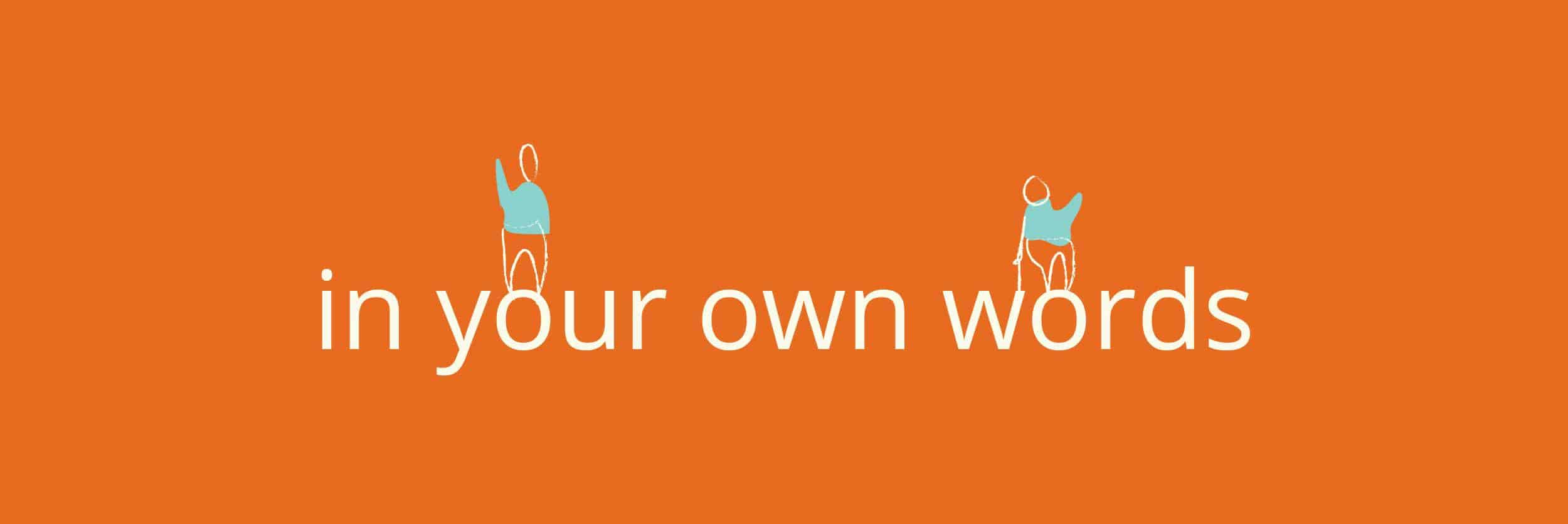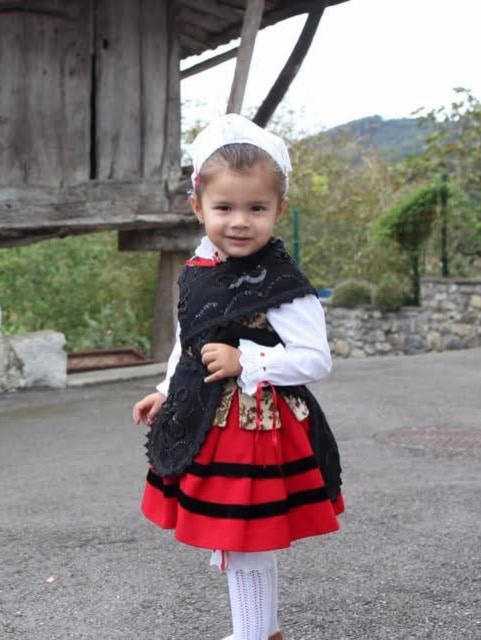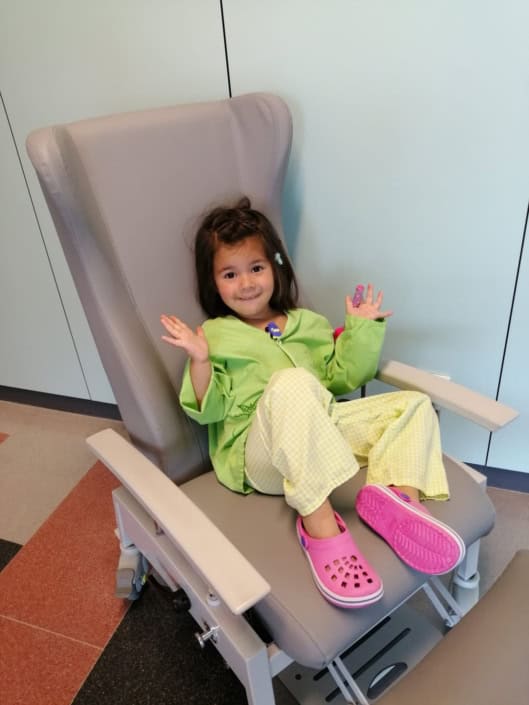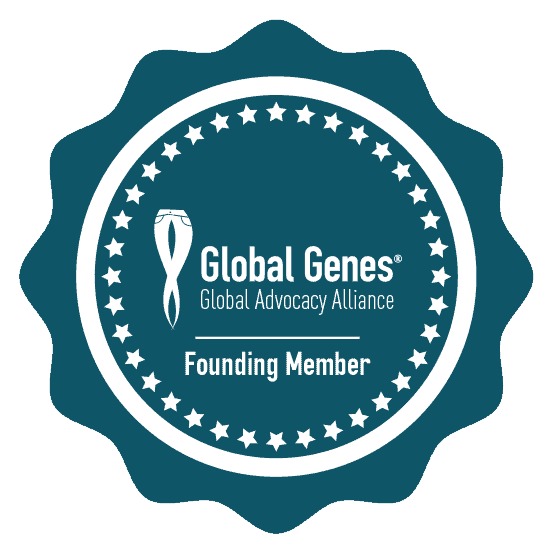La lucha de Mailys
By Noelia Rodriguez
(Scroll down to read Mailys’ story in English.)
Mailys nació en 2015 de un embarazo sin complicaciones y un parto sin problemas. Siempre fue una niña muy “normal”. Empezó a caminar a los 13 meses; con dos años hablaba muy bien. No era una niña que se ponía enferma. Su salud era muy buena. Hasta que, en diciembre de 2017, dos meses antes de cumplir los tres años, su vida cambió y la nuestra también.
Estando de viaje en Francia, de repente, una noche empezó a tener problemas con su pierna izquierda. Ella me decía que se le había dormido la pierna. Y al poco pasó a su brazo y su cara. Al llegar a Urgencias me dijeron que estaba teniendo una hemiplejia del lado izquierdo. Después de varias pruebas no encontraron la explicación. Pasamos la noche en el hospital. Al día siguiente, fue su brazo derecho el que empezó a fallar delante de los médicos. Quedamos todos muy asustados. Le dieron corticoides y se le pasó. Al no conseguir sedarla no se pudo hacer la resonancia magnética. Me dijeron que al llegar a España había que hacerle la resonancia magnética.
En enero de 2018, cuando llegamos a España, volvió a tener otro ataque del lado izquierdo pero esta vez empezó a tener clonías. Fuimos a Urgencias. Después de cuatro horas de ataque consiguieron parar las clonías. Le hicieron un escáner y un electroencefalograma pero los resultados no mostraban nada raro. La hospitalizaron. Dos días después volvió a tener otro ataque. Los médicos no se explicaban los ataques y no entendían porque la niña seguía consciente durante los ataques. Esto les hizo descartar la epilepsia. La derivaron a otro hospital más grande y donde estaban preparados para hacerle una resonancia magnética. Se la hicieron junto a una punción lumbar y otro electroencefalograma. Lo único que se veía era una lentificación en el electro. Mailys se había recuperado bien, solo tenía problemas muy leves de movilidad en su pierna izquierda. A mí lo que más me llamó la atención era que había perdido el brillo en sus ojos. Le hicieron pruebas genéticas porque sospechaban de una Hemiplejia Alternante de la Infancia (HAI). Este diagnóstico me asustaba. Pensaba que iba a perder a mi hija.
En mayo de 2018, Mailys sufrió una tetraparesia. No podía caminar, no controlaba sus brazos, no se la entendía cuando hablaba y ya ni podía tragarse su saliva. Estuvo ingresada en la UCI alimentándose por una sonda. Los resultados de la resonancia magnética eran muy malos, muchas lesiones, mucha inflamación y una lesión medular. Tras unos bolos de corticoides, paró la inflamación. Ahora tocaba empezar el duro trabajo de rehabilitación para intentar conseguir recuperar todo lo perdido. Después de mucho trabajo y gracias a sus ganas, Mailys consiguió recuperar casi todo. Ahí empezamos a notar que tenía problemas de memoria, le costaba encontrar las palabras, pero ya caminaba, hablaba, comía y eso era lo más importante para mí.
En enero de 2019, Mailys se puso mala de la gripe y empezó a tener convulsiones. En la UCI le hicieron otra resonancia y descubrieron más lesiones y mucha inflamación. Otra vez con bolos de corticoides. En mayo de 2019, de nuevo empezó a tener convulsiones junto a una hemiplejia del lado izquierdo. De nuevo en la UCI y bolos de corticoides. La derivaron a un hospital de Barcelona porque seguían con la duda de la HAI.
En junio de 2019, en Barcelona me hablaron de unos anticuerpos y que iban a mirar. En julio me llaman y me dicen que mi hija tiene una encefalopatía asociada con anticuerpos anti-MOG positivo. Por un lado fue un alivio porque ya no era HAI y ya sabía lo que tenía mi hija.
Al tener el diagnóstico, empezaron con el protocolo del Rituximab, 2 dosis en 15 días y luego una dosis cada 6 meses. Esto era lo previsto, pero Mailys no sigue los protocolos. En noviembre de 2019, empezaron a temblar sus manos. Una vez ingresada vieron otras lesiones activas. Estaba teniendo un ataque de ataxia. Al hacerle la analítica vieron que ya tenía linfocitos B pero el protocolo del Rituximab era de cada 6 meses así que le volvieron a dar bolos de corticoides. En febrero de 2020, cuando fuimos a poner el Rituximab, Mailys se quejó de un dolor en el ojo izquierdo. La vio un oftalmólogo. Mailys había perdido la vista del ojo izquierdo. De nuevo corticoides.
Al llegar el COVID, las revisiones médicas no pudieron hacerse como se había previsto. En junio de 2020, mi hija tuvo un “estatus del mal”: vómito y su mirada se giró a la izquierda, su cuerpo se debilitó y acabó arqueando la espalda como si estuviera poseída. Desde este día el protocolo del Rituximab cambió. Ahora Mailys tiene una infusión cada 4 meses y hay que vigilar sus linfocitos B porque repobla muy rápido. Además, le añadieron Inmunoglobulinas mensuales. Tras un año sus venas estaban muy cansadas. En agosto de 2021 decidimos ponerle un reservorio (Port-a-Cath). Lleva sin recaídas desde junio de 2020 pero con un tratamiento duro.
La enfermedad de Mailys nos cambió la vida a su hermano mayor y a mí. Al principio era el miedo. Nos controlaba. Aprendimos a vivir alerta por si tenía otro ataque. Ahora que sabemos lo que tiene y que los médicos lo tienen controlado, lo que condiciona nuestras vidas son las secuelas. Mailys tiene 10 años y tiene que vivir con problemas de coordinación, problemas cognitivos que le afectan en su aprendizaje y su gestión de las emociones, y una fatiga física y mental. Además, tiene problemas de control de esfínteres y de incontinencia. A eso hay que añadir su condición de inmunodeprimida que le provoca infecciones de orina, orzuelos en los ojos y problemas bucales. El vivir con miedo a los virus tanto ella como nosotros. Su vida está ritmada con sesiones de fisioterapia, tratamientos, revisiones médicas. Como madre es agotador y estresante. Como hermano es frustrante y condicionante ya que sabe que la salud de su hermana es lo primero. Además, para él es muy complicado hacer frente a las miradas y juicios de los demás.
Esta enfermedad es muy dura, las secuelas nos marcan a todos, pero tenemos la gran suerte de que Mailys es una niña muy valiente y alegre. Ella es muy consciente de lo que le pasa y hace que sea más fácil de llevar. A mí me dio la fuerza de crear una asociación en España para que se conozca y se investigue más su enfermedad. Y sobre todo evitar que otros niños pasen por lo mismo que ella.
Mailys was born in 2015 after an uncomplicated pregnancy and a smooth delivery. She was always a very “normal” baby. She started walking at 13 months and by the age of two, she was speaking very well. She wasn’t a child who got sick and her health was very good. In December 2017, two months before her third birthday, her life changed, and so did ours.
While we were traveling in France, she suddenly started having problems with her left leg. She told me her leg had gone numb and the numbness quickly spread to her arm and face. When I arrived at the emergency room, they told me she was experiencing hemiplegia on her left side. After several tests, they couldn’t find an explanation. We spent the night in the hospital. The next day, it was her right arm that started failing right in front of the doctors. We were all very scared. They gave her corticosteroids, and it went away. Since they couldn’t sedate her, they couldn’t do an MRI. They told me that she would need an MRI when we got to Spain.
In January 2018, when we arrived in Spain, she had another seizure on her left side, but this time she started having clonic symptoms. We went to the emergency room. After four hours of the seizure, they managed to stop the clonic symptoms. They performed a scan and an EEG, but the results showed nothing unusual. She was hospitalized. Two days later, she had another seizure. The doctors couldn’t explain the seizures and couldn’t understand why she remained conscious during them. This led them to rule out epilepsy. They referred her to a larger hospital, where they were prepared to perform an MRI. She underwent this along with a lumbar puncture and another EEG. The only thing that was seen was a slowing of the EKG.
Mailys recovered well, only having very mild mobility issues in her left leg. What caught my attention most was that she had lost her sparkle in her eyes. They performed genetic testing because they suspected Alternating Hemiplegia of Childhood (AHC). This diagnosis frightened me. I thought I was going to lose my daughter.
In May 2018, Mailys suffered from quadriparesis. She couldn’t walk or control her arms, her speech was incomprehensible, and she could no longer swallow. She was admitted to the ICU and had to be fed through a tube. The MRI results were very poor: numerous lesions, a lot of inflammation, and a spinal cord injury. After a few doses of corticosteroids, the inflammation stopped.
Now it was time to begin the hard work of rehabilitation to try to recover everything she had lost. After a lot of work and determination, Mailys managed to recover almost everything. However, we began to notice she had memory problems and struggled to find her words. But she was walking, talking, and eating, and that was the most important thing for me.
In January 2019, Mailys came down with the flu and began having seizures. In the ICU, they performed another MRI and discovered more lesions and significant swelling. She was again on steroid injections. In May 2019, she began having seizures again, along with hemiplegia on her left side. She was back in the ICU and on steroid injections. She was referred to a hospital in Barcelona because they still had concerns about AIH.
In June 2019, in Barcelona, they told me about some antibodies and that they were going to test for. In July, they called and told me that my daughter had MOG-positive antibody-associated encephalopathy. It was a relief because it was no longer AIH, and I now knew what my daughter had.
Upon diagnosis, they started her on the Rituximab protocol: two doses every 15 days, then one dose every six months. This was the plan, but Mailys didn’t follow the protocols. In November 2019, her hands began to tremble. Once she was admitted, they noticed other active lesions. She was having an ataxia attack. When the blood test was done, they saw that she already had B lymphocytes, but the Rituximab protocol was every six months, so they started giving her corticosteroid pills again. In February 2020, Mailys complained of pain in her left eye and she visited an ophthalmologist. Mailys had lost sight in her left eye, so she went back on corticosteroids.
When COVID hit, medical checkups couldn’t take place as planned. In June 2020, my daughter experienced a “sick spell”: she vomited, looked to the left, her body weakened, and she arched her back as if possessed. After that, the Rituximab protocol changed so that Mailys now has an infusion every four months, and her B lymphocytes need to be monitored because they repopulate very quickly. In addition, monthly immunoglobulins were added. In August 2021, we decided to insert a reservoir (Port-a-Cath). She hasn’t relapsed since June 2020, but she’s continues to undergo a rigorous treatment regimen.
Mailys’s illness changed her life, and the lives of her older brother and me. At first, fear controlled us. We learned to live alert in case she had another attack. Now that we know what the diagnosis is and the doctors have it under control, our lives are impacted by the after-effects. Mailys is 10 years old and lives with coordination problems, cognitive problems that affect her learning and emotional management, and physical and mental fatigue. She also has problems with bladder/bowl control and incontinence. Added to this is her immunosuppression, which leads to urinary tract infections, styes, and oral problems. Living in fear of viruses affects all of us. Her life is punctuated by physiotherapy sessions, treatments, and medical checkups. As a mother, it is exhausting and stressful. As a brother, it is frustrating and limiting, since he knows that his sister’s health comes first. Her brother also finds it difficult to cope with the stares and judgments of others.
This disease is very tough and the after-effects mark us all, but we are very fortunate that Mailys is a very brave and cheerful girl. She understands what she is going through, and that makes it easier to bear. It gave me the strength to create an association in Spain to raise awareness and research for her illness and to prevent other children from going through what she did.
Our “In Their Own Words” blog posts represent the views of the author of the blog post and do not necessarily represent the views of SRNA.








